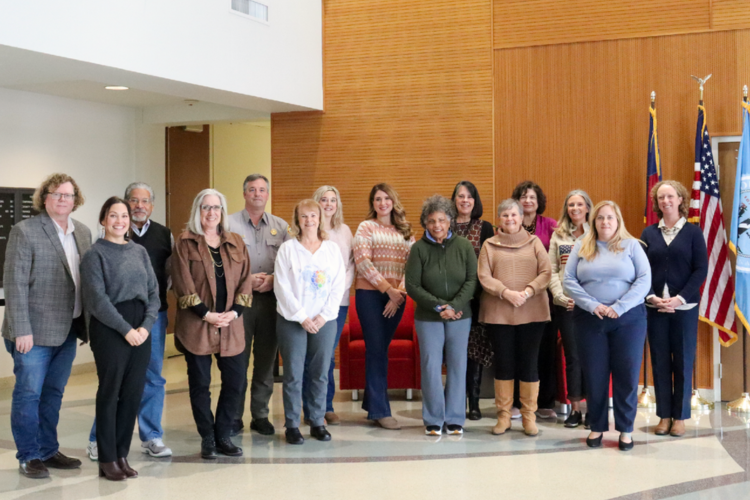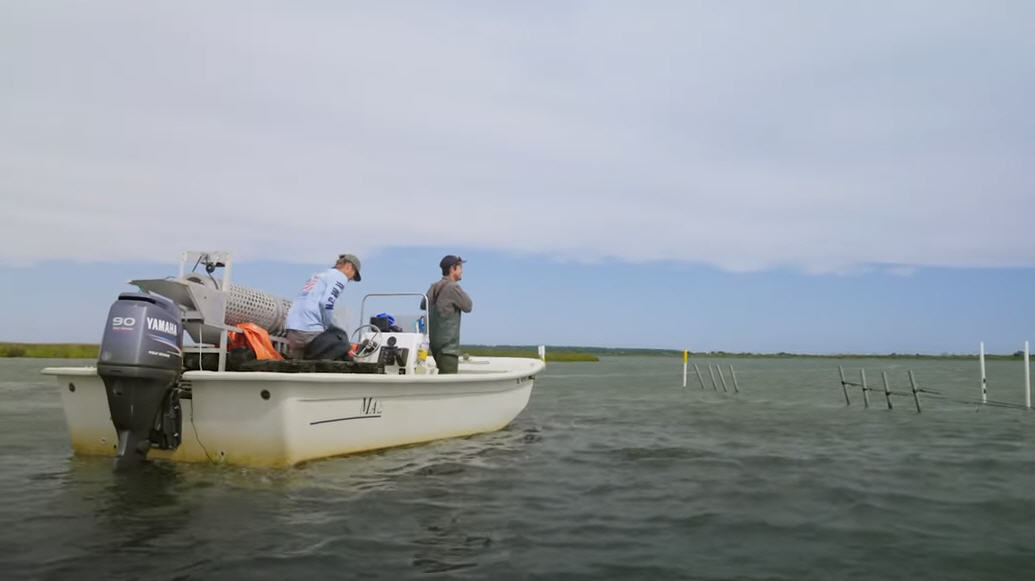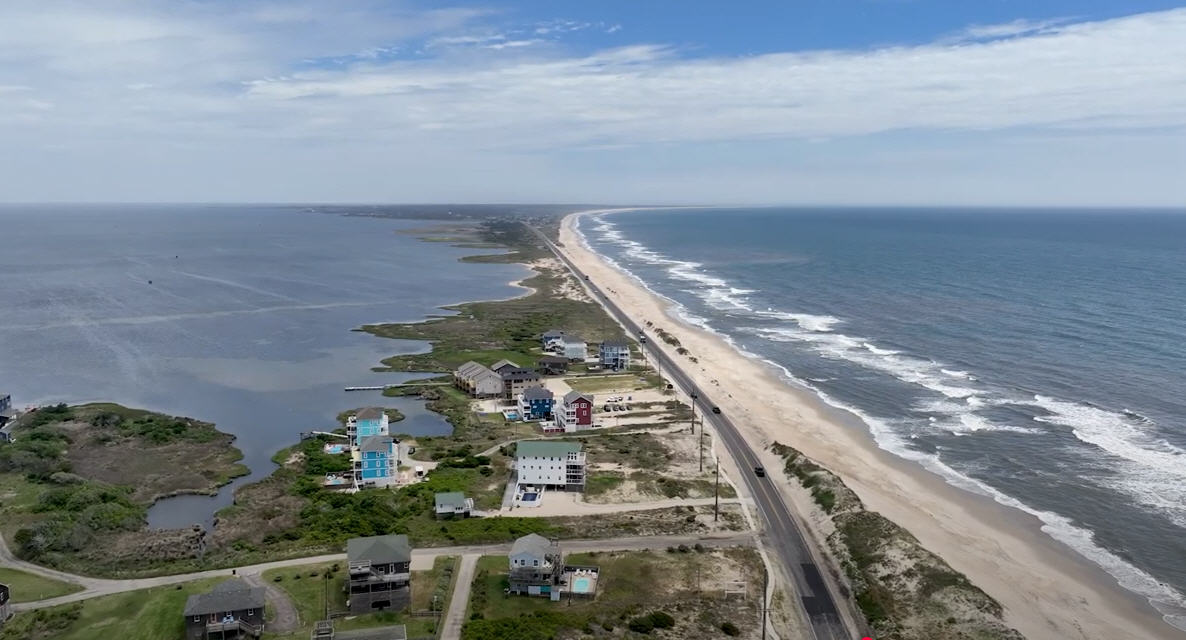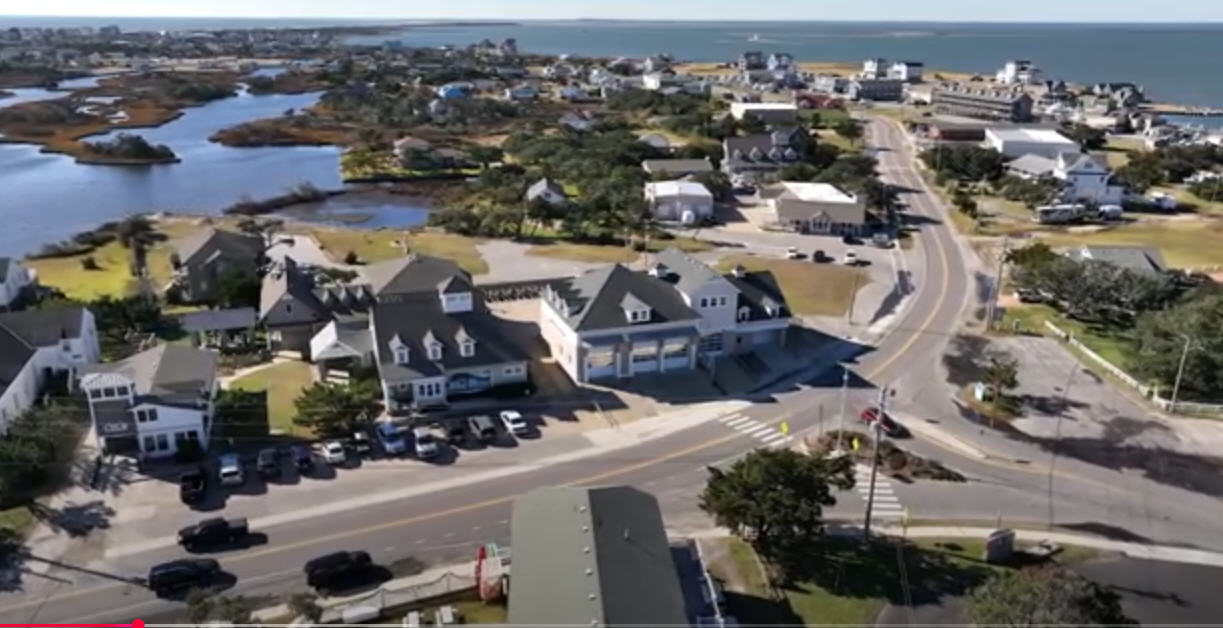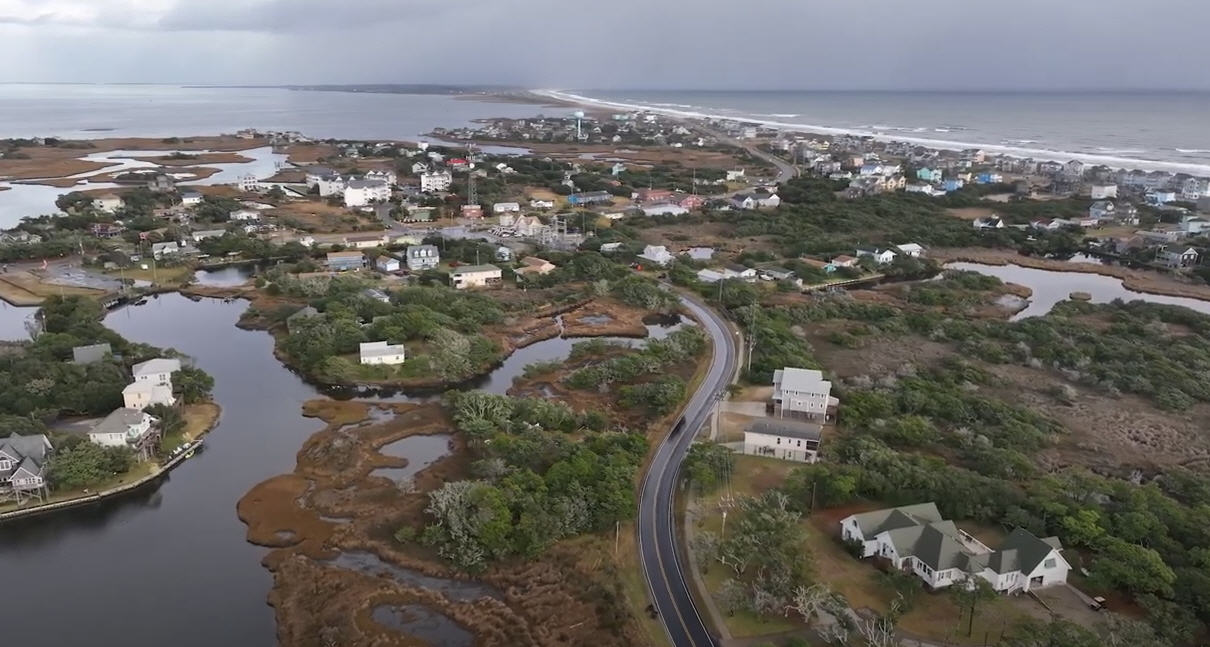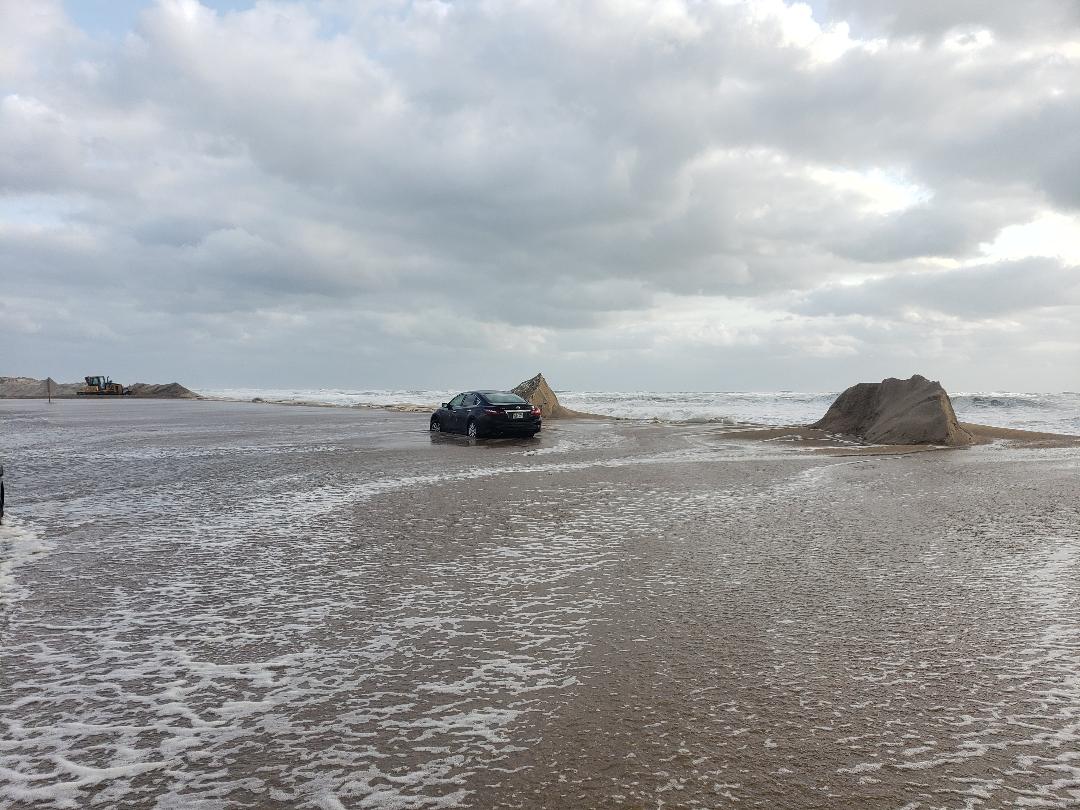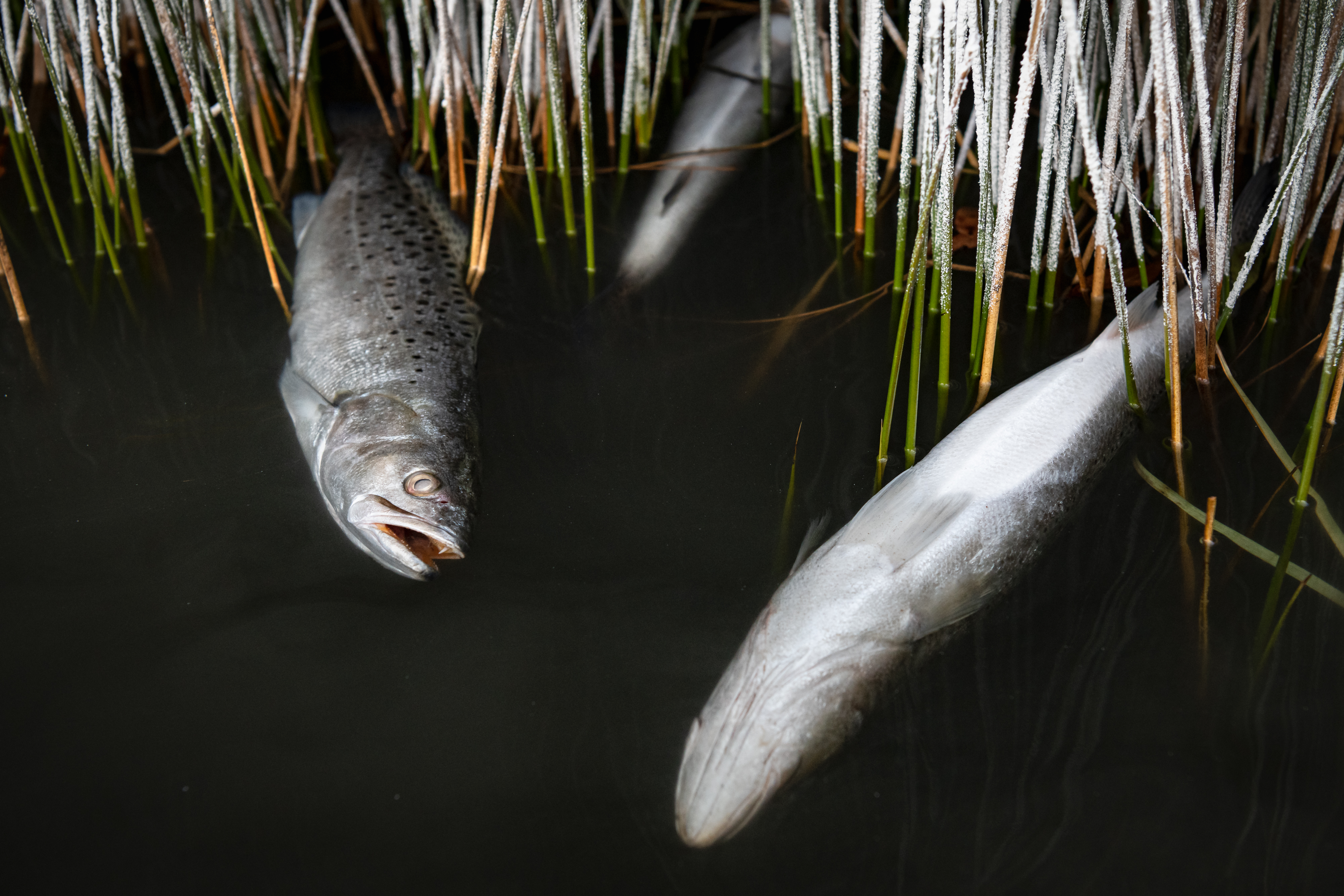The Spread of the Invasive Common Reed, and What’s Being Done
Take a drive along N.C. Highway 12 in the summertime, and it’s not unusual to spot tall and feathery stalks on both sides of the road swaying with the breeze. On the oceanside, these unmistakable plants that poke out above the sand dunes are the familiar sea oats that line the beaches, but on the soundside, these similar spindly plants are something else entirely.
Common reed, formally known as Phragmites, has been an issue for the Cape Hatteras National Seashore for years. An invasive plant species that has been around for centuries, this tall and pliable reed has been overtaking large swaths of the area’s marshes and soundside regions, elbowing out other native vegetation which used to thrive in the local landscape.
It’s a problem that hasn’t gone unnoticed, either. In 2012, the National Park Service (NPS) estimated that approximately 800 acres of brackish-water marsh in the park was being severely impacted by Phragmites, and in 2012 and 2013, the park began and effort in cooperation with the NPS Southeastern Exotic Plant Management team to begin treating patches of Phragmites to prevent a continued spread into other areas of the National Seashore.
It’s a tough and uphill battle to address the problem. This invasive exotic plant species is a prolific seed producer, but typically spreads through vigorous growth of rhizomes and stolons, which can grow roughly six feet per year. The perennial grass is also reported to release the allelopathic chemical gallic acid into the soil, which inhibits the establishment and growth of other marsh species, dwindling the competition. As a result these combined characteristics, Phragmites, once established, frequently develops dense, monospecific colonies over extensive areas, and can overtake shorter native marsh species. According to data from the NPS, isolated patches of Phragmites can double in coverage every 5 years, which is why steps are continually being taken to beat back new growth, and why long-term plans are in the works for a more aggressive response.
The large and almost tropical looking swaths of common reed are fairly easy to spot today, but as it turns out, they have been a resident of coastal North Carolina for a very long time. The common reed is able to grow on virtually every continent on the globe, and genetic testing of the plant has shown that both native and non-native varieties of the common reed exist in the U.S. It’s the non-native, invasive species that’s overtaking the local marshes, and many researchers believe that this brand of common reed arrived on our shores in the 1700s or 1800s, likely while being stored in the hauls of ships from Europe, where they originated.
And while they look relatively at home in the local environment, and similar to the sea oats that are clustered on the oceanside of the highway, their invasive nature tends to do more harm than good.
“This is an invasive species that is known to take over habitats and push out more native species,” says Environmental Protection Specialist for the National Park Service, Sabrina Henry. “It just becomes such a thick species, that it pushes out the plant species that our native wildlife would traditionally be nesting in.”
Working with specialized NPS departments and other organizations, the NPS has undergone a years-long effort to hand treat the species on a semi-annual basis.
“This past winter, we had the Exotic Plant Management team in Georgia come to [our area] in January to map and treat some areas, and they also came back in June,” says Henry. “Typically, spring and fall is ideally when we want to treat the species.”
“When we do treatment, we hand treat it,” she adds. “We cut the stalks, and put on herbicide to make sure it gets absorbed. But it’s so thick, that we do have to come back year after year to re-treat.”
But hand treatment is not the only solution being considered for long-term management of the common reed. Henry reports that the National Park Service is looking into future aerial spraying options, which will address the problem on a much larger scale.
“First we need a more extensive mapping of where we are seeing the species, and where it’s going,” she says. “But we’re working on a project for [applying] aerial spray to larger infestation areas.”
While steps are taken towards more streamlined responses to the common reed infestation, Henry reports that the NCDOT is addressing the area close to the Bodie Island Lighthouse, which is currently heavily affected by the invasion of Phragmites.
“NCDOT will be treating 100 acres near the Bodie Island Lighthouse over next five years,” says Henry. “They have also been hand-treating Phragmites along the boardwalk near the lighthouse.”
The problem lingers for sure, and even with the semi-annual treatments, common reed is still a common sight along the marshes and brackish terrain that is found along the soundside.
But the problem is not going unnoticed, and the response is likely to be heightened in the months and years to come.
“We recognize that we have a concern we need to manage,” says Henry. “We know we have areas we need to do better on, and it’s something we are definitely working towards.”








